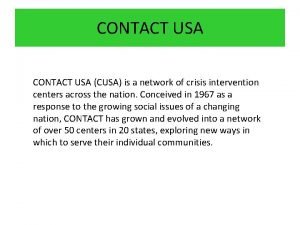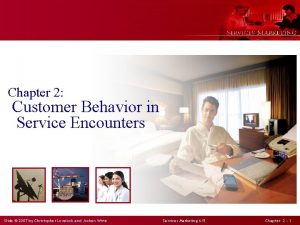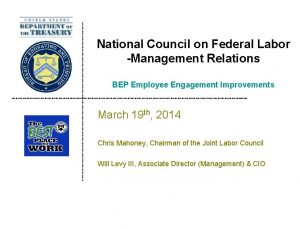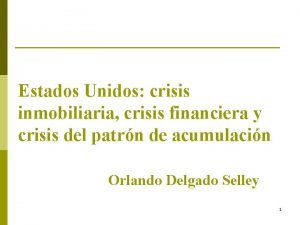CONTACT USA CUSA is a network of crisis


















- Slides: 18

CONTACT USA (CUSA) is a network of crisis intervention centers across the nation. Conceived in 1967 as a response to the growing social issues of a changing nation, CONTACT has grown and evolved into a network of over 50 centers in 20 states, exploring new ways in which to serve their individual communities.

CONTACT USA Mission Providing leadership and support to centers that provide helpline services to people in crisis or need Vision The leadership and support Contact USA provides will enable member centers to thrive and provide professional, effective service Values Statement We value and respect all human beings. We reach out in compassion to ease human suffering. We believe in the effectiveness of trained volunteers and staff

Board of Directors Mary Drexler, Executive Director Board: Tim Jansen, Community Crisis Services, Maryland – Chair Molly Brack, Agora Crisis Center, New Mexico Eleanor Letcher, Treasurer, CONTACT of Mercer County, NJ Becci Reedus, Iowa City Crisis Center, Iowa Dorothy Triplett, Johnson County Crisis Center, MS Brenda Patterson, Johnson County Crisis Center, MS Marshall Ellis, National Suicide prevention Lifeline, NYC Virginia Bainbridge, Member at large, CT

Crisis Chat : Who is it for? • Crisis Chat is for anyone who is going through a hard time and just needs to talk, including people who are thinking about suicide. • It’s for anyone who may be experiencing depression, anxiety, relationship problems, family stressors, abuse, financial issues, and more. • It’s for anyone looking for a compassionate connection when they are feeling most alone.

Online Emotional Support/CHAT Defined • Online Emotional Support is NOT: – Counseling – Therapy • Online Emotional Support (OES) IS: – Compassionate, non-judgmental listening – Exploration of thoughts and feelings – Exploration of positive next steps and options • Other terms used going forward: – Visitor: the individual requesting services – Chat Specialist: the staff member/volunteer providing services

Trends in Internet Usage

Internet Used as an Emotional Outlet § People in distress are reaching out online: Facebook, Twitter, Craigslist postings, personal blogs, e-mails to crisis centers § Why? - convenience - anonymity (awkward conversations that would be difficult to have in person) - stigma/shame of asking for help from a crisis center - lack of confidence and/or verbal acuity to express emotions and ask for help - “testing the waters” to see if anyone cares § “Online disinhibiting effect”: the tendency of people to open up more and say more about themselves online than they would over the phone or face-to-face

The OES Response § OES services, such as Chat, provide a safe online venue where people can reach out for help. § Engaging populations traditionally hard to engage face-to-face. § OES services aim to: - Provide people with tools to make better health/life decisions - Increase culturally relevant access to support for current and emerging generations - Decrease stigma associated with accessing treatment/support services

Chat Specialist & Visitor Expectations Chat Specialist: • The average chat can last 20 -30 minutes. • High risk chats sometimes take 1 hour or more. Visitor: § Visitors are unfamiliar with the service and may not understand what it provides, but also its limitations. § When necessary, provide the Visitor with information on chat format: discussion of issues and options for support. § While you want to be patient and allow for conversations to unfold, it’s also important to not allow the Visitor to cover every single issue they have; help them focus on their main concern.

Etiquette on Chat 1. Respond promptly to a Chat Visitor and expect the same from them. 2. Answer a request for chat as promptly as possible but not longer than two minutes. 3. Do not use slang in conversations; maintain professionalism (use emoticons sparingly). 4. Use correct punctuation and minimize spelling errors. 5. Refrain from joking with the Visitor. There is more chance for miscommunication in the absence of verbal tone, so it is more difficult for the visitor to tell if you are kidding, tongue-in-cheek, serious, sarcastic, etc. 6. Do not type in ALL CAPITALS – it is called “shouting” and is considered to be rude.

Chat Timing § Jumping too far ahead: – A Specialist may use too many questions, or may move too quickly toward “problem solving”. – Using open-ended questions, validation and empathy at the beginning of a chat will allow the Visitor to express the issues that brought them to chat. • Chat segments: • – Not too short, but too long. – Come to a happy medium with your “chat segments, ” matching the Visitor’s style, if appropriate. Out of sync communication: a Visitor’s response to a question may come after they’ve provided additional content. • This is common in chat settings. It’s ok to clarify which answer corresponded to which question and other potentially confused meanings.

High Levels of Disclosure • Online disclosure is high and many topics are often disclosed at once. – Visitors may not answer questions because they are busy typing out more details. – There may be a very high need for the Visitor to “vent” for a long period of time. • Assertiveness and Use of Repeating Questions: – Be assertive (not aggressive) in directing the flow of the chat at all times. – Help the Visitor focus on one issue at a time. – Repeat questions if the visitor does not answer the first time.

Abrupt Endings on Chat Transient and Unconnected Nature of Chat • The flip side of the online disinhibiting effect: – While it is easier for Visitors to disclose in an online environment, it is also much easier for them to disconnect (lower feeling of responsibility to the relationship/ easier to leave someone you cannot see). • It can be hard to have a chat end without resolution especially as we have no way of “calling back” Visitors that have not given us contact information.

Suicide Risk Assessment • Risk assessment takes longer on chat. • Asking all the questions may need to be woven in many sections of the chat. If resistant at first, come back to them later. • Preface with a leading statement in text-based communication. • Stay focused on the questions you need to ask. • Begin the risk assessment as soon as a comfortable rapport has been established, as chats can unexpectedly end at any time.

High/Imminent Risk on Chat Visitor Location • For each visitor we have an Internet Protocol (IP) address, which is the unique virtual address for each computer. • This is not always traceable back to a computer – for example, if it is part of a University or Wi-Fi network. Chat to Phone • You may be able to turn high risk chats into phone conversations. You should have an internal protocol on how and when to turn a chat into a phone call.

Facilitating Active Intervention • “Active Intervention” is much more difficult online without the cooperation of the Visitor. • If risk of harm is suspected, attempt to collect identifying information: – full name – phone number – address – emergency contact • Obtain the Visitor’s IP address (can be gotten from the chat software itself) • Contact local authorities when police intervention may be necessary.

Staffing Considerations What Makes a Good Chat Specialist? • Good Phone Specialists can make good Chat Specialists: empathetic, non-judgmental, open-minded, intelligent and able to follow center protocol. • However, also need to be able to: – type quickly with few errors, – be comfortable with technology, – be assertive (rephrasing, guiding the flow of the chat) – be patient (without rushing into “fix” mode) – have an affinity for nuance-catching words that can be ambiguous and are able to explore for further meaning – remain relaxed throughout intense chats.

Visitor Feedback • “I have gotten a lot of support here. I would go as far as to say they have saved my life. ” • “This service has been a great help to me. It is a great alternative when you can't or don't feel comfortable talking on a phone. I know I've tried to call the suicide hotline three times, but panicked each time, so this is perfect for me. ” • “Being in my current situation I have no support, it was nice to have or feel as though someone was on my side. ” • “I was really relieved to see this service existed cause I hate talking on the phone. ” • “I think this is an incredible service and resource for those of us who are suffering and just need someone to listen to us. ”
 Cusa network
Cusa network Myasthenia gravis sauna
Myasthenia gravis sauna Frases de nicolas de cusa
Frases de nicolas de cusa Cusa hub
Cusa hub Cusa clubs
Cusa clubs Noncontact force examples
Noncontact force examples Machine design
Machine design Contact vs non contact forces
Contact vs non contact forces Two objects sliding past each other experience
Two objects sliding past each other experience Paranochyia
Paranochyia Is friction a contact force or a noncontact force
Is friction a contact force or a noncontact force Ohmic contact
Ohmic contact Post encounter stage
Post encounter stage Force and motion
Force and motion Contact and non contact forces
Contact and non contact forces Usa national phenology network
Usa national phenology network Virtual and datagram networks
Virtual and datagram networks What is topology in computer
What is topology in computer Features of peer to peer network and client server network
Features of peer to peer network and client server network

































